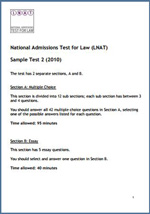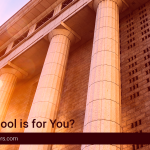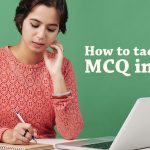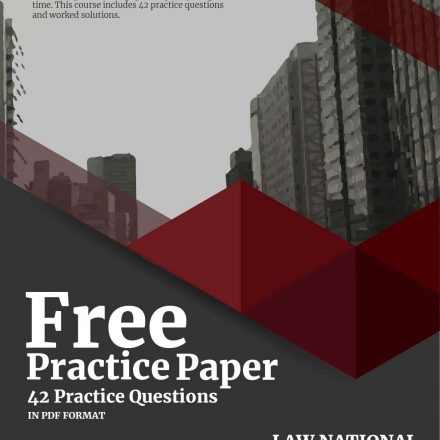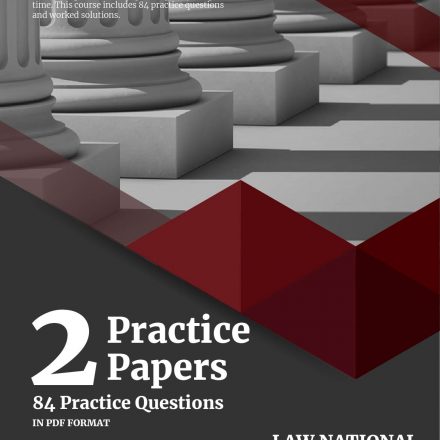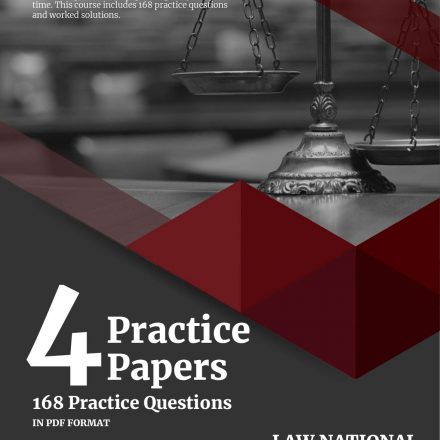These LNAT practice questions are very similar to actual LNAT. Here you will find 3 passages on different topics and 4 MCQ type questions against each topic. This pattern reflects and simulates exact LNAT type questions. Do read carefully before attempting the MCQs.
Share this page to support more free contents like this written by subject matter experts and university professors. Your 1 share makes a lot of difference. Also don’t forget to give a thumbs up to our official facebook page.
Section A – Reading Comprehension
Renaissance – the mirror of art
Art is undoubtedly the best-loved and -known part of the Renaissance. The Renaissance produced an extraordinary amount of art, and the role of the artist differed from that in the Middle Ages.
The Renaissance had a passion for art. Commissions came from kings, popes, princes, nobles, and lowborn mercenary captains. Leaders commissioned portraits of themselves, of scenes of their accomplishments, such as successful battles, and of illustrious ancestors. Cities wanted their council halls decorated with huge murals, frescoes, and tapestries depicting great civic moments. Monasteries commissioned artists to paint frescoes in cells and refectories that would inspire monks to greater devotion. And civic, dynastic, and religious leaders hired architects to erect buildings at enormous expense to beautify the city or to serve as semi-public residences for leaders.
Patrons such as Lorenzo of Florence and popes Julius II (reigned 1503–1513) and Leo X (reigned 1513–1521) were active and enlightened patrons. They proposed programs, or instructed humanists to do it for them, for the artists to follow. At the same time, the results show that they did not stifle the artists’ originality. The wealthy merchant wanted a painting of Jesus, Mary, or saints, with small portraits of members of his family praying to them, for his home. A noble might provide funding to decorate a chapel in his parish church honouring the saint for whom he was named. Members of the middle classes and probably the working classes wanted small devotional paintings.
The ancient world of Rome and Greece, as interpreted by the humanists, greatly influenced Renaissance art. Artists and humanists studied the surviving buildings and monuments, read ancient treatises available for the first time, and imbibed the humanist emphasis, plus the habit of sharp criticism of medieval styles.
Leon Battista wrote treatises on painting and on architecture; Giorgio Vasari’s (Lives of the Artists) was a series of biographies of Renaissance artists accompanied by his many comments about artistic styles. It was the first history of art.
The artist began as a craftsman, occupying a relatively low social position and tied to his guild, someone who followed local traditions and produced paintings for local patrons. He became a self-conscious creator of original works of art with complex schemes, a person who conversed with humanists and negotiated with kings and popes. Successful artists enjoyed wealth and honors, such as the knighthood that Emperor Charles V conferred on Titian (Tiziano Vercelli, c. 1488–1576) in 1533.
The Renaissance was a hierarchical age in which the social position of a child’s parents largely determined his or her place in society with nobles, commoners, wealthy merchants, craftsmen, shopkeepers, workers, peasants, prelates, parish priests, monks in monasteries, nuns in convents, civil servants, men of the professional classes, and others. Ecclesiastical, lay, and civic charitable institutions provided for orphans, the sick, the hungry, prostitutes and the syphilitic ill. Only a few humble individuals rose to the apex of society. Francesco Sforza, a mercenary soldier of uncertain origins, became duke of Milan in 1450 and founded his own dynasty. The shepherd boy Antonio Ghislieri became Pope Pius V.
Finally, as it developed during the Renaissance, the Protestant Reformation was a movement that had profound implications, not only for the modern world in general, but specifically for literary history. Just as Renaissance Humanists rejected medieval learning, the Reformation seemed to reject the medieval form of Christianity. In the early sixteenth century, the German monk Martin Luther reacted against Church corruption, the sort depicted, for example, by Chaucer in the Canterbury Tales.
Many Catholics like Erasmus wanted to reform the Church from within. However, Luther’s disagreements with Church policy ultimately led him to challenge some of the most fundamental doctrines of the Church, which in turn led him and his followers to break away from the Catholic Church in protest; hence they were known as Protestants. The Reformation had significant political ramifications, for it split Europe into Protestant and Catholic countries which often went to war with each other during this period. Protestantism broke up the institution that had for so long unified all Europe under the Pope.
Question 1:
Which of the following is not true to the Renaissance art?
- A remarkable feature of Renaissance art was the heightened interaction between patron and artist
- Such art was designed to celebrate and impress
- Men and women of many social levels had an appetite for art.
- Stimulated by the ancients, Renaissance artists were the first in European history to write extensively about art and themselves.
- The social and intellectual position of the artist did not change in the Renaissance
Question 2:
Which of the following is not a logical thought in the view of the writer in the 8th paragraph?
- The Renaissance was a variegated society
- It was an age of conspicuous consumption and great imbalances of wealth.
- Renaissance society also provided social services for the less fortunate.
- social mobility was rampant
- all of the above
Question 3:
Which of the following shares a cause-effect relation?
- Rebirth of Renaissance : onset of Protestant Reformation
- Authority of Roman Catholic Church :Protestantism
- Reformation movement : birth of two warring clans
- Institution of Church : Martin Luther’s attack on Church
- Rejection of Pope : Protestantism
Question 4:
Which of the following, can be considered as a Renaissance piece of art?
- A vivid and verbatim description of the encounters in a battlefield
- A comprehensive explanation of the Grecian terracotta figurines
- A sombre narrative on a humble man’s standing in the social ladder
- An article / treatise of a market place thronged by commoners and elites
- A treatise on the incredible discovery of microscope and telescope
Industrial Revolution- a beacon to path-breaking phenomena
The Industrial Revolution (1820-1870) was of great importance to the economic development of the United States. The first Industrial Revolution occurred in Great Britain and Europe during the late eighteenth century. The Industrial Revolution then centred on the United States and Germany.
The Industrial Revolution itself refers to a change from hand and home production to machine and factory. The first industrial revolution was important for the inventions of spinning and weaving machines operated by water power which was eventually replaced by steam. This helped increase America’s growth. However, the industrial revolution truly changed American society and economy into a modern urban-industrial state.
The real impetus for America entering the Industrial Revolution was the passage of the Embargo Act of 1807 and the War of 1812. Americans were upset over an incident with the Chesapeake whereby the British opened fire when they were not allowed to search the ship. They also seized four men and hung one for desertion. This resulted in much public outrage and the passage of the Embargo Act which stopped the export of American goods and effectively ended the import of goods from other nations. Eventually, America went to war with Great Britain in 1812, and manufacturing began to expand.
Industrialization in America involved three important developments. First, transportation was expanded. Second, electricity was effectively harnessed. Third, improvements were made to industrial processes such as improving the refining process and accelerating production. The government helped protect American manufacturers by passing a protective tariff.
In 1794, Eli Whitney invented the cotton gin . The South increased its cotton supply sending raw cotton north to be used in the manufacture of cloth. Francis C. Lowell increased the efficiency in the manufacture of cloth by bringing spinning and weaving processes together into one factory. This led to the development of the textile industry throughout New England.
In 1846, Elias Howe created the sewing machine. All of a sudden, clothing began to be made in factories as opposed to at home.
Eli Whitney came up with the idea to use interchangeable parts in 1798 to make muskets. If standard parts were made by machine, then they could be assembled at the end much more quickly than before. This became an important part of American industry and the Second Industrial Revolution.
As industries and factories arose, people moved from farms to cities. For example, Cyrus McCormick created the reaper which allowed quicker and cheaper harvesting of grain. John Deere created the first steel plough in 1837 helping speed up farming across the Midwest.
With the increased size of the United States, better communication networks became ultra important. In 1844, Samuel F. B. Morse created the telegraph and by 1860, this network ranged throughout the eastern coast to the Mississippi.
The Cumberland Road, the first national road, was begun in 1811. This eventually became part of the Interstate 40. Further, river transportation was made efficient through the creation of the first steamboat, the Clermont, by Robert Fulton. This was made possible by James Watt’s invention of the first reliable steam engine.
The creation of the Erie Canal created a route from the Atlantic Ocean to the Great Lakes thereby helping stimulate the economy of New York
Railroads were of supreme importance to the increase in trade throughout the United States. In fact, by the start of the Civil War, railroads linked the most important Mid West cities with the Atlantic coast. Railroads further opened the west and connected raw materials to factories and markets. A transcontinental railroad was completed in 1869 at Promontory, Utah.
Question 5:
Which of the following captures the purpose of industrial revolution?
i. To augment productivity
ii. To enter into a revolution
iii. To improve the economic independence
iv. To encourage inventions
v. To make a mark as an urban industrial state
- i, iii, v
- i, iii, iv,v
- i and v
- iii only
- all of the above
Question 6:
Which of the following is not a fact?
- Invention of sewing machine revolutionized the manufacture of cloth
- Futile efforts were made in agriculture to improve cultivation
- Overcrowding was a niggling problem for American cities
- Industrial Revolution marched its way to create New York as a trade hub
- All of the above.
Question 7:
Which of the following key features made industrial revolution a huge success?
- Transportation got expanded
- Government aids
- The unparallel efforts of the people on that era
- The independence of the economy
- Inventions
Question 8:
Which of the following closely establishes the link between cotton gin and its effects?
- Machine is brought to correct 50 answers in a day
- Oil is a lubricant is used to increase the efficiency of the machine
- A robot is made to separate husks from the grain
- An automated robot is designated in the role of a teacher
- A machine is made to multi-task
Gender silhouette over Politics
No other issue is so contentious and well-debated in the politics of contemporary societies as the question of gender and politics. Women activists all over the world have begun to question political inequality among the sexes. They have raised fundamental questions about the essence of male-dominated democratic system in which women find themselves formally or informally excluded from political power. In recent decades, they have focused on the vital issues of empowerment, rights, social and political equality and discrimination in its all forms. The feminist movement even in a male dominated, socially conservative society like Pakistan has brought into sharp focus more or less the same issues about the social status of the women and their inadequate representation in the political power and participation in politics.
The feminist movement around the world reach startlingly the same conclusions on the issue of gender and political power. Although women in different parts of the world face different problems and confront different challenges and the feminist movement has many shades and strands, all of them, irrespective of the nature of societies they live in, strike a common tone.
Pakistan is getting more organised, with their activists highly educated, skilled and articulate. And all women groups have a clear vision and a convincing agenda of more forward-looking politics than that of the males in the Pakistani society. What holds the women in Pakistan back? Why very few women compared to their substantial numbers, roughly fifty percent of the population, exercise or seek to exercise political power?
These questions have been a subject of many theories, conjecturing and sociological explanations in different countries. Many of the factors that work against equality of women in both developed and developing countries are more deeply ingrained in Pakistani society. Jeane J. Kirkpatrick, has attempted to explain low participation of women in politics with reference to four hypothetical constraints — physiological constraints; cultural constraints; role constraints; and male conspiracy. The American political context of this and many other similar studies does not eliminate their relevance to the developing countries like Pakistan. But in explaining the low participation of women in the power process of our countries we have to account for variations, relatively greater influence of some factors than others and look for what is unique and so different from other situations. In case of Pakistan, one must fully comprehend the cultural constraints and how they have reinforced the subordinate social role of women. The social structures that are at the base of any type of political process consist of power relations, relative positions of individuals and groups, established identities and determined roles.
The larger question about gender and power can only be understood in terms of the social structures and how they distribute values in the society. Looking at the general values, social structures and cultural orientation of the Pakistani population, one finds women in the country as the most oppressed social and political class. Dependence, passivity, low self-esteem and denial of even some of the basic rights characterise their general status. But there are great variations in the status and roles of women depending on their social circumstances.
The low social status of women because of the customs of largely feudal and tribal culture pose the biggest barrier in the way of women’s involvement in public affairs of the society in general and electoral politics in particular. Studies on political participation have again and again demonstrated the relationship between social status and participation in the electoral politics.
l measures to increase women’s participation. In the new arrangements that have been announced women will be allocated 30 percent of the seats in the national and provincial assemblies. These are formal affirmative action measures that the women movement in Pakistan had demanded for a long time. Will their status, role and participation in elections increase? Will discrimination against them come to an end?
In answering these questions one must focus on social structures, the rural agrarian environment and the feudal and tribal characteristics of the society. Women’s equality as candidates and voters continues to suffer not because of state policy, but primarily due to tradition, social structures, lower level of education and a male-dominant society.
Question 9:
Which factors form the core of women’s political movement?
i. Change in gender relationships
ii. Self-empowerment
iii. Emancipation
iv. Getting principle of democracy and equality recognised
- All of the above
- i, ii, iv
- i,iii
- i only
- none of the above
Question 10:
What does the phrase ‘common tone’ suggest?
- All modern societies are governed by males;
- Women in all societies have subordinate roles;
- Male dominance is not a natural but cultural phenomenon that must change.
- Social impediments in society
- All of the above
Question 11:
Which of the following is undoubtedly a fact?
- The activists of have to travel a long distance before they get equal rights or increase their share in different professions or in political power.
- Cultural constraints work against the self-empowerment of women, especially in Pakistan
- There is an interlock between social status and participation in electoral politics
- Keeping political participation at bay is on account of cultural and social traits
- It is only social barriers that can recover the situation of the country.
Question 12:
Which of the following reasons suffice to hold back the women of Pakistan in joining politics?
- Their passivity
- Their diffident nature
- Male conspiracy
- Cultural framework
- All of the above
Answers and Explanations
1. CORRECT ANSWER: E
The question requires the student to evaluate each option’s relevance with the mentioned characteristics of the period. Here, option (e) is correct because it is understood from 3rd paragraph, that patrons proposed programs, or instructed humanists to do it for them, for the artists to follow. So option (a) is a feature of the period. Option (b) is also a trait of the Renaissance because we see that leaders used to highlight their achievements in art, cities wanted the council hall depict historical moments, and civic, dynastic, and religious leaders hired architects to erect buildings at enormous expense to beautify the city or to serve as semi-public residences for leaders. So art was more ostentation for them. Option (c) is proved correct in the 3rd paragraph where it states that wealthy merchant, noble, members of the middle classes and the working classes urged for paintings. Option (d) is clear from the 6th paragraph, how Renaissance was the first history of art where artists write discourses about art and themselves. Option (e) gives a wrong piece of information as seen in 7th paragraph – “The artist began as a craftsman, occupying a relatively low social position and tied to his guild, someone who followed local traditions and produced paintings for local patrons. He became a self-conscious creator of original works of art with complex schemes, a person who conversed with humanists and negotiated with kings and popes.” So, it is clear that his social position changed.
2. CORRECT ANSWER: D
A sense of what advances a point logically, is required to answer this question correctly. Here, Option (a) is nullified on the grounds that society at that time comprised of not only nobles, but also commoners, wealthy merchants, craftsmen, shopkeepers, workers, monks in monasteries, nuns in convents, civil servants, men of the professional classes, and others. This eliminates (b) also as these diversified strata clearly indicated the imbalance in wealth accumulation and conspicuous consumption. Option (c) is clear when the paragraph claims (“Ecclesiastical, lay, and civic charitable institutions provided for orphans, the sick, the hungry, and outcast groups, such as prostitutes and the syphilitic ill”). While option (d) provides us the opposite information, it is well understood when the writer ponders on the words ‘only a few’ while telling that just a few could create a niche for themselves. So (d) is the correct answer as the passage shows that social mobility was not ‘rampant’ but only accessible to a few.
3. CORRECT ANSWER: C
It is stated in the last paragraph (“The Reformation had significant political ramifications, for it split Europe into Protestant and Catholic countries which often went to war with each other during this period.”). So, option C is clearly the correct option. Option (e) is not conclusive from the information given in the passage, (a) is incorrect as it is Reformation that paved the way for Protestant, (d) does not share a cause-effect relation ; while (b) is partially correct as it was not the authority but the corruption of the Church that bothered the Protestants.
4. CORRECT ANSWER: E
The question requires that the students can infer, with the help of the details mentioned in the passage, what can be tagged as a Renaissance piece of art (and what cannot be).Option (e) is correct. It is so because, in the passage, we get a glimpse of the Renaissance as a period of art with an emphasis on man and his supremacy (“Artists and humanists studied the surviving buildings and monuments, read ancient treatises available for the first time, and imbibed the humanist emphasis”). This justifies option (e), as this option brings out the superiority of the human race and how they could invent such wonderful creations (like microscope and telescope) that are relevant in themselves. Option (a) boasts of battlefield encounters, but we learn from the passage that the portraits were an ostentatious outburst of royalty. Option (b) gives wrong information. It is simply stated in the passage that Greek art was an inspiration, not the matter of discussions. Option (c), though an emphasis on man, shows man in negative light, as the passage asserts that a man of low stature climbed up the ladder, and thus focussed on their uprising. Option (d) is out of the scope as it is just an article that limits its approach to a market place (not a Renaissance feature), and the conglomeration of poor and rich has nothing to do with their art form.
5. CORRECT ANSWER: D
It is important to understand here, the difference between what is a purpose and what is a mere after-effect or consequence of an event. Option (i) is incorrect as increase in productivity is a consequence of Industrial Revolution, but the question asks the impetus / purpose of it. Option (ii) is absurd as nowhere is it stated they deliberately wanted to rebel. However, it can be inferred from the 3rd paragraph that America was at war with Great Britain which brought about a halt in import and export of goods in America and as a result manufacturing in the country expanded which made them more economically independent. So (iii) is correct. Option (iv) was the end result of the movement, not the purpose. Industrial Revolution made them achieve the tag of an urban industrial state, thus it is not the impetus of the movement.
6. CORRECT ANSWER: B
Understanding the difference between stated facts and judgements or opinions is necessary for the student to answer this question. The statement in option (a) is implied in “All of a sudden, clothing began to be made in factories as opposed to at home”. Option (c) is evident from the line “As industries and factories arose, people moved from farms to cities.” Option (d) is proven by the sentence : “The creation of the Erie Canal created a route from the Atlantic Ocean to the Great Lakes thereby helping stimulate the economy of New York”. Option (b) is not a fact because it is clear from the passage that endeavours were made which resulted in the success of their attempts : (“example, Cyrus McCormick created the reaper which allowed quicker and cheaper harvesting of grain. John Deere created the first steel plough in 1837 helping speed up farming across the Midwest.”)
7. CORRECT ANSWER: E
It is only inventions that paved the way for Industrial Revolution in America., be it in the field of transport (a)-James Watt’s steam engine, creation of telegraph, light bulb (Edison), telephone (Graham Bell), automobile (Karl Benz), or in the field of agriculture and textile industry, thus we see (e) is justified as inventions made life more smoother and convenient and easy.,(c) and (d) were made possible doe to inventions. (b) is just a part of aid provided.
8. CORRECT ANSWER: C
The relation needs to assessed first, : a machine effectively completes its function (gin is used to separate cotton seeds from fiber) in a short span. This condition is fulfilled in (c) where a robot (a machine) performs its function of separating the husks from the grain more competently than a winnower or manually, (a) also talks of a machine doing its function but the time period is provided which is a longer period than expected. Oil is not a machine and it only increases the efficiency of the machine, so (b) is incorrect, (d) is also wrong as a robot (a machine) is functioning as a teacher, but the competency or time taken is subjective (e) is narrow in its scope and has the same flaws as (d).
9. CORRECT ANSWER: B
The introductory paragraph gives way to the answer. Women are concerned about ‘political inequality’ among sexes, hence (i), a questions the male-dominated democracy, seeks inclusion and recognition in the system to uphold equality as the term ‘democracy’ connote, this makes (iv) correct. Women also ponder on empowerment in social and political fronts hence (ii) , but (iii) is not implied anywhere.
10. CORRECT ANSWER: E
Majority of women in Pakistan take a backseat when it comes to voicing their woes due to cultural constraints, they have to assume a subordinate stand , hence (b), culture comes as the biggest barrier in women’s participation in public affairs as discussed in the passage, hence (c). (a) is much evident from the tone of the passage , as this forms the source of ignition of the feminist movement, and well elucidated in the last line of the passage, (d) social and cultural impediments are also contributors to the rebellious movement. Thus (e) is correct.
11. CORRECT ANSWER: C
(a) is implied in the 4th paragraph (“What holds the women in Pakistan back? Why very few women compared to their substantial numbers,…) (b) is explicated in “Jeane J. Kirkpatrick, has attempted to explain low participation of women in politics with reference to four hypothetical constraints — physiological constraints; cultural constraints; role constraints; and male conspiracy.” (d) is true when writer says (“The low social status of women because of the customs of largely feudal and tribal culture pose the biggest barrier in the way of women’s involvement in public affairs of the society ) (e) can be ruled out because there are several other factors also : to tradition, social structures, lower level of education and a male-dominant society. (c) is correct as the fact is reverated in the sentence (Studies on political participation have again and again demonstrated the relationship between social status and participation in the electoral politics.)
12. CORRECT ANSWER: D
It is clearly mentioned in the 6th paragraph: What holds the women in Pakistan back? Why very few women compared to their substantial numbers, roughly fifty percent of the population, exercise or seek to exercise political power? These questions have been a subject of many theories, conjecturing and sociological explanations in different countries. In case of Pakistan, one must fully comprehend the cultural constraints and how they have reinforced the subordinate social role of women. Dependence, passivity, low self-esteem and denial of even some of the basic rights characterise their general status. , so in case of Pakistan culture has worked against women. Thus we can rule out (a), (b) and (c).

